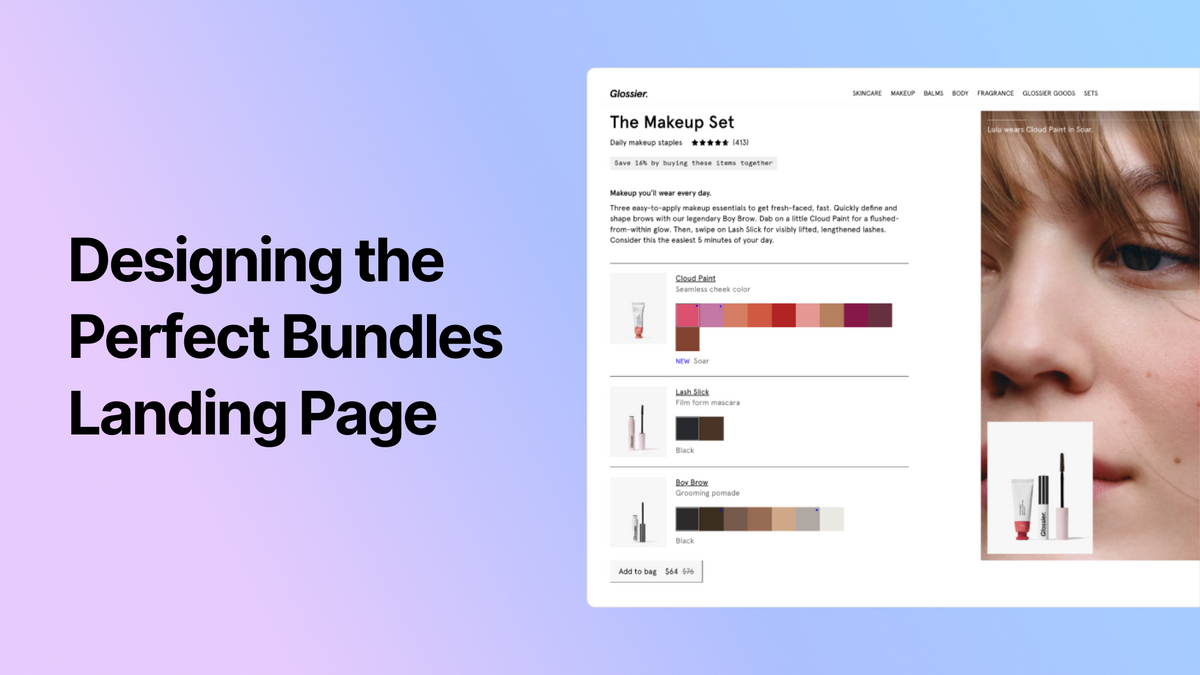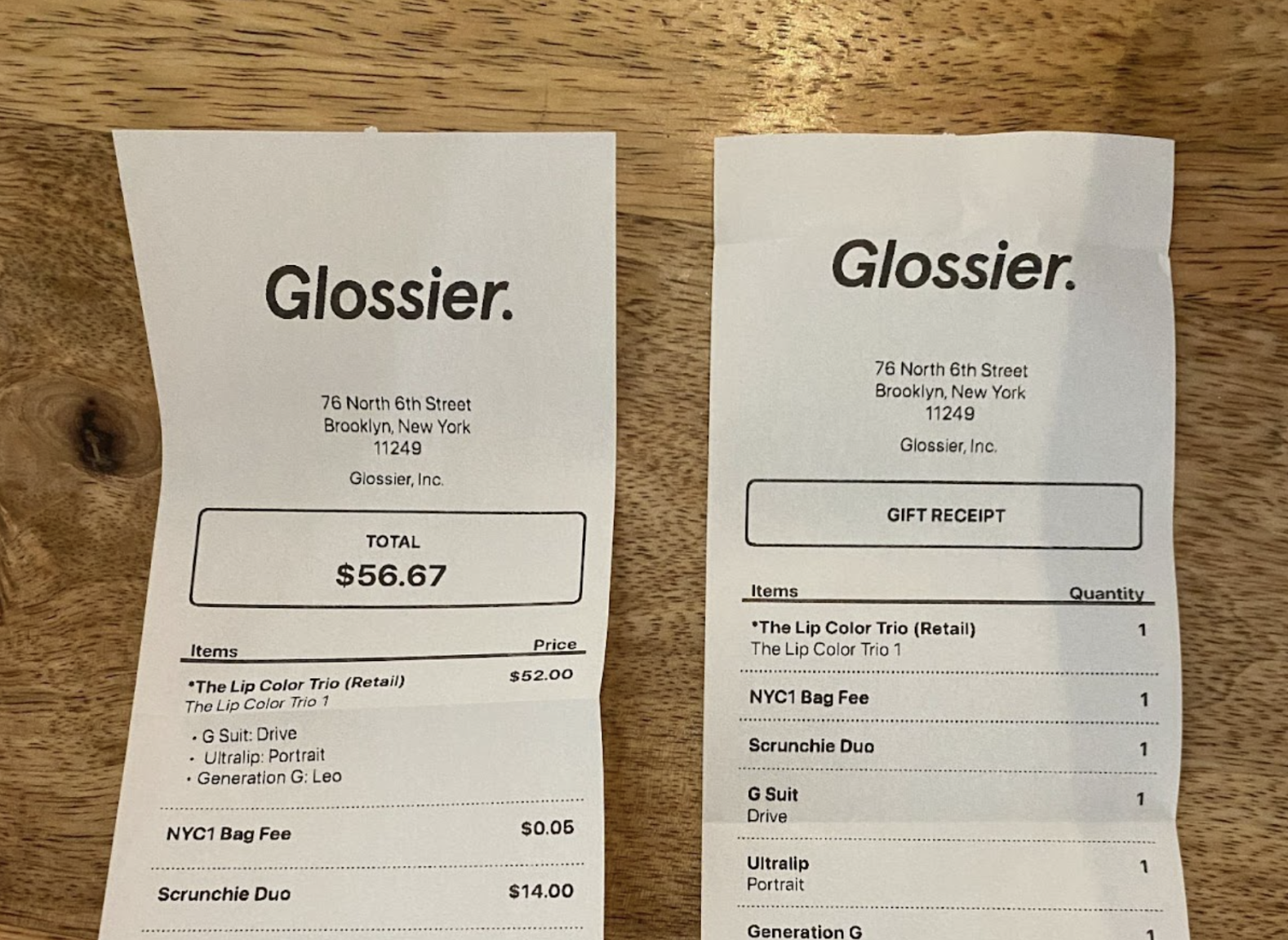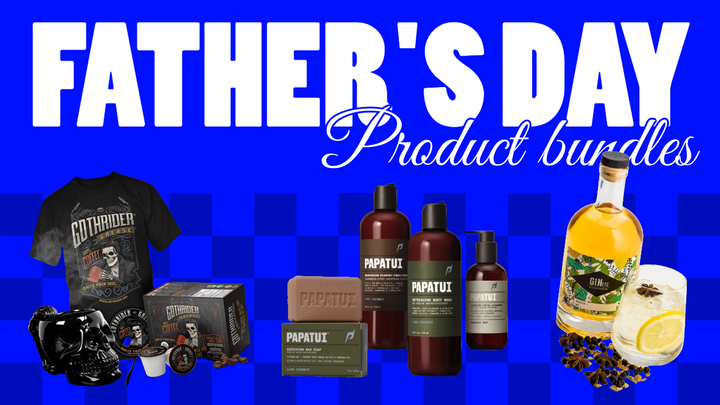Designing High-Converting Product Bundle Landing Pages (+ 10 Examples)
Are your product bundle landing pages driving the number of conversions you’d like? If not, that’s what we’re here for.

Imagine reducing the time shoppers spend hunting for related products and introducing them to new items from your catalog—all in one click.
That’s the beauty of creating dedicated product description pages for your bundles and kits.
You may already have one of these pages set up, but is it driving the number of conversions you’d like? Are you seeing an increase in AOV and your bottom line? If not, that’s what we’re here for.
We explore product bundles all day, every day—and a few have caught our eye recently. So, let's dive right in if you’re looking for proven product bundle landing page strategies (plus, we have a ton of examples to show you, too).
Why it’s important to have dedicated product bundle landing pages
Having dedicated product bundle landing pages is like having your own personal assistant for selling bundles. Instead of making customers put together the bundle piece by piece by clicking through various product pages, these landing pages do the heavy lifting.
Here are some benefits that come with creating bundle product description pages (PDPs):
- Enhanced product promotion: Dedicated pages empower merchants to market their bundled offerings more effectively. They can showcase the bundle's value, savings, and utility through high-quality images, videos, and informative content.
- Improved SEO: These dedicated pages allow ecommerce stores to optimize for specific bundle-related keywords, boosting their chances of ranking higher in search engine results pages.
- Targeted marketing campaigns: Precisely linking advertising campaigns to dedicated landing pages ensures a seamless user experience. Potential customers arrive directly at the product of interest, streamlining the conversion process.
- Upselling and cross-selling: Landing pages can be designed to highlight complementary upsell services, like subscriptions or a membership program, encouraging customers to make additional purchases that complement the bundle.
- Improved analytics: Dedicated landing pages offer precise tracking of bundle performance metrics, providing insights for further optimization.
- Personalized shopping experience: By tailoring bundles to trends, seasons, or user behavior, stores can offer a more personalized shopping experience, increasing sales and enhancing customer loyalty.
- Fewer returns: Bundles that cater to customer needs result in greater satisfaction and fewer returns.
Successful strategies for product bundle landing pages
When creating effective product bundle landing pages, there are several key strategies to remember. We will highlight seven strategies and highlight examples from brands using them.
Bundles need to be relevant — plain and simple
The first and foremost rule for crafting a compelling product bundle landing page is making sure the bundled items are relevant to each other. It may seem obvious, but you'd be surprised how often this fundamental principle is overlooked.
Imagine you're shopping for shampoo, and instead of seeing complementary products like conditioner, you're offered a razor. Confusing, right?
“Showing products that don’t make sense can create user frustration and make your bundle seem like a money-grab,” says Erin DeCesaris, director of strategy at Shopify CRO and web development agency Fuel Made.
Let's take a look at a real-world example to illustrate this point: Sennheiser's "Bass Lovers" set:
Here’s why Sennheiser’s page works:
1. Clear Product Relevance: Sennheiser's page makes it abundantly clear what's included in the "Bass Lovers" set, and each product within the bundle is closely related. In this case, it's all about enhancing the audio experience.
2. Defined Purpose: Sennheiser writes, "Feel the bass and level up your personal home cinema by connecting two Subs to your AMBEO Soundbar Plus." This concise description leaves no room for ambiguity and tells potential buyers exactly what they can expect from the bundle.
3. Visual Representation: The landing page includes high-quality photos of every product part of the set. This visual representation adds a professional touch and lets shoppers see precisely what they're getting.
Data first, landing page strategy second
Creating effective product bundle landing pages goes beyond mere guesswork; it involves using data to fine-tune your approach.
What should you look at? Specifically, analyze what products users purchase together already or what items they frequently browse during the same visit. Items naturally bought together around 5-10% of the time strongly indicate that a bundle with a discount could perform exceptionally well.
Plus, you have room to offer an attractive discount since bundling often reduces your pick and pack and shipping costs as a percentage of revenue.
If you're starting or don't have a wealth of historical data to draw from, don’t worry. You know your brand and products better than anyone else—trust your intuition to create initial bundles and go from there.
Note: the importance of A/B testing
Erin DeCesaris emphasizes the significance of A/B testing in optimizing your product bundle landing page strategy: “A/B testing is a great tool to test where in the conversion funnel to showcase your bundles—and how. Test different placements, messaging, and designs to determine which approach strikes the optimal balance between conversion rate growth and increasing AOV.”
And yes, this also can include testing various product offerings within a bundle. For example, are shampoos, conditioners, and hair masks more popular than shampoos, conditioners, and hair serums? That’s up to you to find out 😉
By systematically testing different approaches, you can gain insights into what resonates most with your audience and fine-tune your landing page accordingly.
Communicate the value of the bundle as a whole
Convincing your customers to choose a bundled offering over individual products requires effective communication of the bundle's unique value proposition.
We’re not just talking about highlighting the cost-savings here—we’re talking about conveying how the bundle enhances their experience.
Take the shampoo and conditioner example from earlier; to successfully communicate the bundle's value, the brand would need to explain why these products are formulated to work together for the best results. Customers want to know how the bundle improves their lives.
A great example of this is Sunday Supply's Animal Kingdom Beach Umbrella and Chair Set:
The product description doesn't just list the items; it goes further to explain why shoppers should care about buying them together. In this case, it's about having an aesthetically pleasing matching beach set at a discounted price.
When you consider Sunday Supply’s typical customers—the beach girlies and guys who want to look cute on the beach—the aesthetic benefit of the bundle makes perfect sense.
Reviews are key. Collect and highlight them effectively
We all know customer reviews can be a game-changer. Like any product description page, it’s important to collect reviews about your bundles and highlight them on bundle landing pages.
These reviews serve as a trusted source of information, helping potential buyers make informed decisions. Here are our two tips for collecting and displaying reviews effectively:
- Strategic Placement: Position the review rating next to the "Add to Cart" button. This allows users to gauge the overall satisfaction of previous buyers quickly. To provide even more depth, enable a click-through option for users who want to read specific reviews. Anchor the link for the reviews to a lower section of the product description page where you display reviews in full detail.
- Review Apps: To streamline the process of collecting and displaying reviews, consider using specialized review apps like Junip or Okendo. These tools make it easy to gather authentic feedback from customers, and their seamless integrations with ecommerce platforms like Shopify simplify the process of showcasing those reviews.
Hero Cosmetics offers a great example of this strategy in action. Here’s a peek at its XL Patch Duo bundle. By placing the review rating right where customers are ready to make a purchase decision, they're maximizing the impact of social proof on potential buyers.
Don’t forget clear discounts for buying in bulk
For businesses catering to wholesalers, showcasing volume discounts through bundles or kits is often the key to success. Wholesale customers typically seek "buy more, save more" options. For instance, selling products in 12-packs, like shampoo, is a standard practice.
It's crucial to clarify these offerings on your bundle landing page. And tools like Simple Bundles offer a multipack feature to simplify creating these bundles.
Simple Bundles’ multipacks allow brands and wholesalers to easily configure bundle options such as 8, 16, or 24 packs. Brands can easily accommodate the specific needs of wholesalers to make it easier to purchase in bulk.
Here’s a short video walking through how these multipack bundles work with Simple Bundles:
Simple Bundles offers a free tier if you want to try setting up multipacks. Get started here.
Consider ways to be more interactive
Sometimes, engaging your shoppers more interactively can be the key to driving bundle sales. One exciting approach is to incorporate a bundle builder quiz into your strategy. This makes the shopping experience more enjoyable and empowers customers to create customized bundles tailored to their needs.
Here’s an example we love from Happy Wax, where customers can build their own melting start kit.
There are three parts to the bundle builder: choosing the warmer style, warmer color, and three scents to get started with. Allowing more customization often results in higher customer satisfaction and a greater sense of ownership over the purchase.
If you’re looking for a platform to help you build quiz experiences, Okendo Quizzes offers flexible question types and branching logic, as well as various customization features to match the quiz experience to your brand.
Tip: You can still offer customization without using a quiz
If you don’t want to build an interactive product bundle quiz, there are ways you can make it easy for shoppers to customize their product bundles directly on the PDP. Let’s look at Loaded Shop, for example.
Loaded is one of Scandinavia's leading webshops that sells clothing, training accessories, and protein and supplements for fellow fitness enthusiasts. The team partnered with Simple Bundles because they wanted an easier way for customers to personalize their orders from various choices, creating 262,144 bundle variants.
We customized the dropdowns to the Loaded team’s specifications, offering options like radio buttons and other selectors to match branding. We also ensured Loaded's bundle options aligned seamlessly with their website theme and display preferences.
Once the bundles went live, Loaded marketed them heavily to its customers in various ways, resulting in an AOV increase of 11%. This is just an example of another way you can offer customization on your bundle PDPs.
Read our full case study here about Loaded Shop’s product bundle strategy to see how Simple Bundles also helped streamline shipping and fulfillment.
Leverage subscriptions for a double win
There’s no doubt that bundles are a game-changer for brands that want to raise AOV—but what if you could increase that and LTV at the same time? That’s why we suggest pairing your bundles with a subscription option. You know, in case customers want to repurchase the same bundle again in a month or so.
Subscriptions also offer convenience to your customers by automating their product replenishment process. They don't have to worry about reordering their favorite products regularly, which can be especially appealing for cosmetics, healthcare, or food-related products.
Olipop’s Best Sellers bundle is an excellent illustration of how you can merge your bundles and subscriptions. Customers can choose their preferred flavors for the bundle and save 15% by opting for the subscription version.
Additionally, they can tailor their delivery schedule by selecting a frequency of every two, four, or eight weeks.
Bonus: Highlight bundles across the entire customer journey
While dedicated landing pages for bundles are a fantastic start, extending your bundle offerings strategically throughout the entire customer journey is essential to maximize conversions. Let’s talk about four ways you can do this.
1. Offer upgrades on other PDPs
One effective way to encourage bundle conversions is by offering users the opportunity to upgrade to a pre-made bundle when viewing a single product page.
For instance, consider Franklin's Popcorn, which simplifies the process for users looking at their popcorn maker by enticing them to upgrade to a bundle that includes the maker and popcorn at a discounted rate.
2. Highlight bundle upsells in the drawer cart
Finding the right balance between upselling and a seamless checkout process can be challenging, but it's worth tackling. Pease Doors, a company specializing in doors for homes, found a winning formula.
Pease Doors recognizes the unique nature of their products, where customers often require complete door kits to match their chosen door. Instead of offering individual doors, they placed bundle options directly in the slide-out cart using Simple Bundles drawer cart integration.
This innovative approach led to remarkable results for Pease Doors:
- A 5-10% surge in take rates
- An average order value increase of $50
- A boost in monthly revenue by $20-50K
Key takeaways from Pease Doors?
- Aim for value: When enhancing your slide-out cart with additional information, ensure it adds value rather than friction to the customer experience.
- Enhance the experience: Consider how your upsells can simplify and enhance the shopping experience. Pease Doors curated their bundle kits to complement their core products seamlessly.
- Ensure visibility: Place these bundles above the "checkout" button on your cart page, ensuring customers see them before finalizing their orders.
3. Add a final call-out on the checkout page
Don't miss the opportunity to showcase savings at the checkout stage. This is something Erin focuses on with her clients at Fuel Made.
Jonas Paul, one client example, displays relevant bundle add-ons underneath the discount code or gift card option on the Shopify checkout page. The goal is to offer users a final chance to explore low-ticket bundles they might have missed while shopping on the site.
4. Bridge the online and in-store bundle experience
For businesses with both online and brick-and-mortar stores, it's crucial to create a consistent bundle experience. Glossier's retail store provides an excellent example of this.
In Glossier’s physical retail store, bundles have their dedicated wall, mirroring how online sets are displayed. Here’s an example from its “Makeup Set”—the online and in-store version:
Displaying your product bundles in brick-and-mortar stores provides an additional opportunity to boost the average order value (AOV) of these transactions.
Additionally, a shopper who is merely browsing in-store may not be prepared to make a purchase at that time, but they may return to your online store later, knowing that the bundle will also be available online.
Before you get caught up in the nuances of how to do this, know that bridging the in-person and online experience is easier than you think!
It all comes down to integrating your tech stack.
For example, Simple Bundles (a customizable bundles app for Shopify brands) has a native integration with Shopify POS. This allows associates in brick-and-mortar stores to select the exact bundle options chosen by customers in-store and streamline the checkout process.
Even better, if a customer selects three items from a bundle shelf, the sales associate can quickly find that bundle with their preferred options on their POS device.
You can see how the full bundle and its contents show in the customer’s receipt:

Without an integration between your bundle software and your POS system, store associates would have to look for each item in a bundle individually and manually add a discount—whereas the integration makes sure the bundle and discount are added automatically.
Simple Bundles offers a free tier for Shopify brands who want to efficiently connect their product bundles with POS and 3PL/logistics systems. Get started here.
Maintaining your bundles PDPs is easy when you can streamline the backend
The strategies we covered today are what we’ve seen work well for brands, but at the end of the day, you need to run tests and see what converts. Every business is different, so you do you!
If you are looking for a solution to help you streamline your bundle operations, that’s where Simple Bundles shines. With our platform, you can create a fundamental product on Shopify that encompasses either your bundle variants or the individual products that make up the bundle.
Shopify offers the flexibility to modify product descriptions and upload images for your bundles. Whether you intend to sell these individual SKUs separately or exclusively through bundled offerings, the choice is entirely yours.
Then, in your Shopify admin, you'll see the bundle and its individual SKUs added to the order.
Simple Bundles also offers you the option to modify the inventory of the main bundle based on its component items. This feature enables you to adjust the available quantity of the bundle that can be sold, taking into consideration the current inventory of its components.
In other words, you can quickly update the stock levels of your bundles, based on the availability of their components.
You can try Simple Bundles for free here if you’re interested in streamlining your product bundle operations when building those beautiful landing pages. Good luck!


